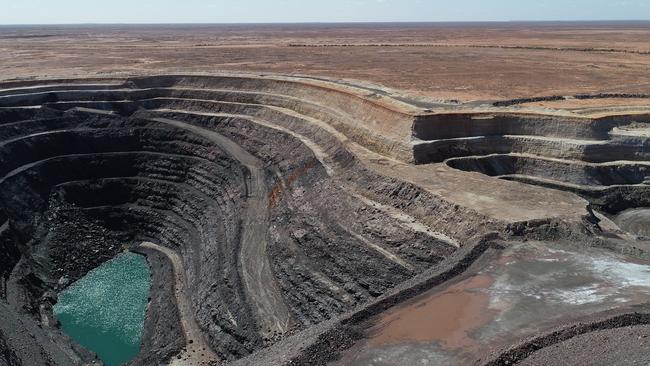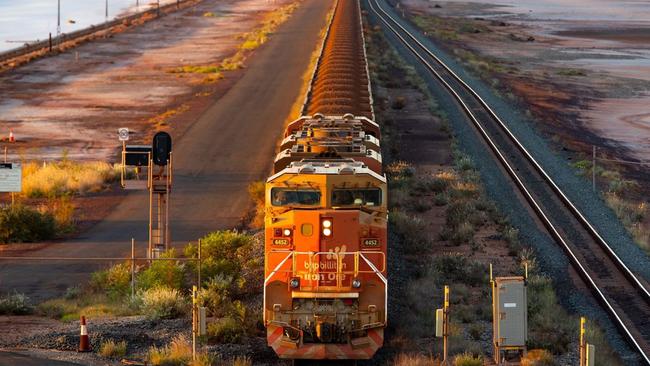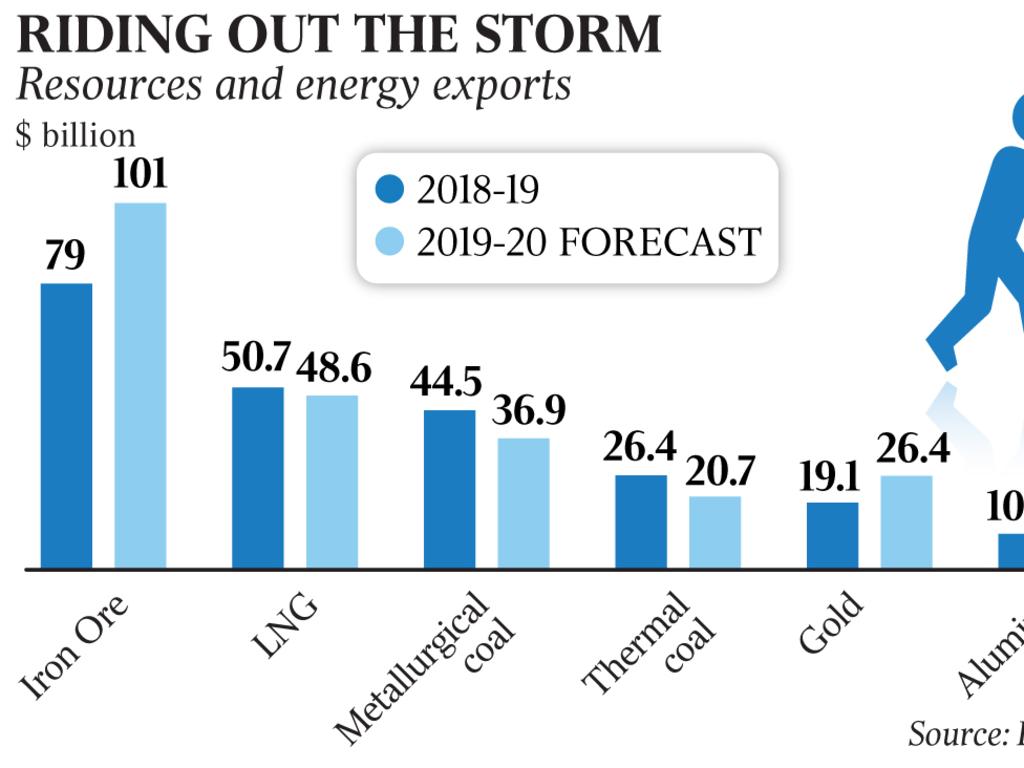Record year for iron ore exports despite pandemic
Australia’s surging iron ore exports are on track to break a $100bn export record, the mining industry maintaining jobs and production levels amid the pandemic.

Australia’s surging iron ore exports are on track to break a $100bn export record as the resources sector braces for an investigation into its first suspected case of community transmission of the COVID-19 virus in central Queensland’s coalmining region.
Resources industries have continued to operate throughout the crisis, maintaining jobs and production levels with forecasts showing export earnings on track for a record $299bn in 2019-20 — $18bn higher than forecast in December — driven by strong iron ore prices, a virus-induced spike in the gold price and decline in the Australian dollar.
The mining, oil and gas sectors are holding up the economy by maintaining jobs and production levels with strict protection protocols and isolated camps introduced to keep the industry operating through the COVID-19 pandemic.
Border shutdowns and travel limits have also slashed the number of interstate fly-in, fly-out workers from more than 10,000 to less than 1200 in just three weeks.
On Friday, BHP Mitsubishi Alliance announced a Blackwater mine operations services maintenance worker, who had not been on site since April 1, had tested positive, with contact tracing showing he used buses to travel between Rockhampton and the mine in central Queensland. Industry sources told The Australian the case could be one of the first examples of community transmission of COVID-19 to hit the sector.
Treasurer Josh Frydenberg said the minerals industry had not been hit as hard as other sectors by the pandemic. “The coronavirus has had a severe impact on the Australian economy, yet not all sectors have been affected equally,” he said. “The mining sector, parts of agriculture and manufacturing along with supermarkets, chemists and healthcare are proving to be resilient.”

A Bureau of Statistics survey last week on the impact of COVID-19 found that 90 per cent of businesses were still operating in “some form or another”, including 96 per cent of logistics industries such as transport, postal and warehousing, 96 per cent of finance and insurance services, 94 per cent for construction and 92 per cent for manufacturing.
Spending patterns also show a jump of 120 per cent in sales for pharmacies, 90 per cent for supermarkets and 75 per cent for online discount stores compared with the same time last year.
The huge mines of WA’s Pilbara region, which make Australia the world’s largest exporter of iron ore, have continued to operate largely unscathed, with China’s recovery from the virus expected to drive strong demand over the rest of this year.
Iron ore delivered to China is currently fetching just under $US80 ($128.40) a tonne, above both the $US73.50 a tonne WA Treasury had originally forecast for this year and the $US55 — excluding shipping costs — estimated by federal Treasury, providing a buffer to government finances.
In Australian dollar terms, the iron ore price is higher than at almost any time since early 2014 and is being assisted by mine closures in South America, Mongolia and South Africa.
Chris Salisbury, the head of Rio Tinto’s iron ore operations, said the industry realised it was in a privileged position to be allowed to operate. “We’ve got strong demand for our iron ore. China has recovered. We’ve got ships waiting. Our order books are full. And the business is running more or less normally,” he said.
He said trade and other data suggested the post-COVID-19 recovery of China was genuine. “We’ve been monitoring so-called fast data for things like electricity consumption, coal consumption, traffic jams, those sorts of things, and there’s no doubt we’ve seen a pick-up in those measures that is translating into the more physical measures like iron ore and steel stockpiles,” Mr Salisbury said. “Certainly China is turning, which is good news for our industry and the resources sector overall.”
In the 2019-20 financial year so far, Australia exported 556 million tonnes of iron ore, worth $65.4bn, including 123 million tonnes in the January-February period, after the start of the coronavirus outbreak, worth $13.9bn.
The latest Minerals Council of Australia market report says: “Prices for iron ore have held up on expectations that China’s forthcoming fiscal stimulus package could offer significant steel-intensive infrastructure spending.
“This optimism was supported by trade data showing China’s iron ore imports for the January-February period 2020 increased 1.5 per cent compared to 2019.”
After the annual drop in Chinese steel demand during the Lunar New Year and, after the start of the spread of COVID-19, demand for 2020 bounced back to equal that of 2019 and 2018 and was above demand at the same time in 2017.
Santos managing director and chief executive Kevin Gallagher, also chairman of the Australian Petroleum Production and Exploration Association, said the industry was committed “to working with all levels of government and the business community to get jobs and investment going again as soon as we possibly can”.
“We’re the world’s biggest LNG exporter, bringing in around $50bn a year and oil brings in a further $10bn a year, taking our share of total exports to 12 per cent.
“Very importantly, we support 80,000 Australian jobs directly and through our supply chains, not only in capital cities, but in regional Australia.
“Looking forward to the recovery phase, our industry is going to be critical to provide secure, well-paying jobs, bring in export income and contribute to government revenues that will help fund the economic relief packages necessary to tide Australian households and businesses over while the economy is in hibernation.”


To join the conversation, please log in. Don't have an account? Register
Join the conversation, you are commenting as Logout